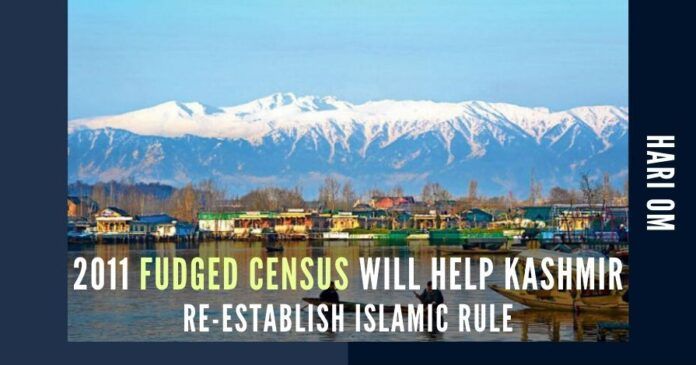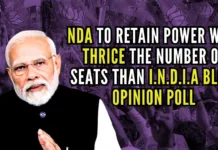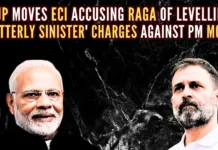
By these parameters, Jammu should have got more seats but Kashmir exercises administrative control over the State.
There is consensus in Jammu that “delimitation based on the 2011 fudged census figures will deny the people of the province proper representation in the Legislative Assembly of UT of J&K.” They want delimitation based on the 2021 fair census figures. However, J&K BJP is treading a different path. It has been saying that it doesn’t find anything wrong in the proposed delimitation exercise based on the 2011 census. Besides, it has been misleading the people of Jammu province by asserting that the new delimitation will be based on the “new domicile rules”. Not just this, it is saying, “delaying elections in J&K would have ramifications at the international level.” Indeed, a silly and preposterous argument.
The aggrieved people of Jammu have consistently questioned the 2011 census figures concerning the State and asserted that their population was equal to that of Kashmir, if not more. That their claim seems to be well-founded could be seen from what the experts like Sanjeev Nayyar have said on the basis of their research. They have asserted that “figures are cold statistics, but they do have a subtext.”
The Muslim population in J&K has increased every decade. It was 64% of the total population in 1981, 67% in 2001, and 68% in 2011. Correspondingly population of Indian born religions has fallen i.e. 36% (before the start of insurgency), 33%, and 31%.
What have they said about the 2011 census figures concerning J&K? They have said, “Between 2001 and 2011 the State’s population went up by 23.6% whilst the number of voters between 2002 and 2014 went up by 14%.” They added that “in absolute terms population in Kashmir between 2001 and 2011 went up by 14.11 lakhs (25.8%) whilst an increase in the number of voters between 2002 and 2014 was by 24.7% (7.12 lakhs). Corresponding figures for Jammu are 21% and 5%.”
It is pertinent to mention here that in 2002, the number of voters in the Jammu region was more than Kashmir by 1.41 lakhs. In 2014, Kashmir exceeded Jammu by 4.21 lakhs i.e. a whopping swing of 5.67 lakhs.
It also needs to be noted that there is no census data available for 1951 and 1991, as the State was excluded from the census operations conducted in 1951 and 1991 by the Registrar General of India across the nation.
The experts, who have put in hard labour to study the demographic changes in Jammu and Kashmir, have made the following observations:
- From the census ending 1971-2001, average population growth in J&K was approximately 30%, dropping to 24% in 2011. Corresponding figures for Kashmir are 29% dropping to 26% in 2011 and for Jammu, 31% dropping to 21% in 2011.
- The percentage growth in the Jammu population post-1991 would actually be lower than 21% since some part of the migrated Kashmiri population, post-1990 genocide must be residing in Jammu. Due to migration within and outside the State, the percentage growth in Kashmir’s population should have been lower but it grew by 26%.
- Census figures show that the difference between the population of Jammu and Kashmir has in a way disproportionately increased in the two decades between 1981 and 2001 (251 % over 2 census periods i.e. over 100% per decade) and 2001 and 2011(44%). It was 2,54,000 in 1951; 3,27,000 in 1961; 3,60,000 in 1971; 4,17,000 in 1981; 10,47,000 in 2001; and 15,09,000 in 2011. Note that the difference between the two regions increased by 44% between 2001 and 2011 i.e. post-outbreak of insurgency in 1989 as compared to 16% between 1971 and 1981.
- If we were to compare the population in absolute numbers between 1981 and 2011, the population in Jammu increased by 26.61 lakhs whilst that of Kashmir by 37.53 lakhs. Jammu’s numbers include approximately, those 3 lakh people who migrated from Kashmir, so the differential increase in Kashmir’s population was actually 13.9 lakhs. Looking at the national population growth rate, the data puts a question mark on the Census Organization?
- The population of Kashmir as a percentage of the State’s population increased by 3% between 1981 and 2011. It was 52% in 1981; 54% in 2001; and 55% in 2011.
- Comparing 2001 and 2011, the population of Kashmir went up by 14,11,000 or by 26% and of Jammu by 9,49,000 or by 21%.
- The Muslim population in J&K has increased every decade. It was 64% of the total population in 1981, 67% in 2001, and 68% in 2011. Correspondingly population of Indian born religions has fallen i.e. 36% (before the start of insurgency), 33%, and 31%.
- Between 1981 and 2011, the population of Muslims as a percentage of the total population increased by 4.12% whilst that of Indian born Religions fell by 4.27%.
- For 2001-11, the same figure was an increase of 1.34% for Muslims and a decrease of 1.43% for Indian born Religions.
How did Kashmir’s population increase by 14,11,000 in 10 years from 2001 to 2011 is a million-dollar question? Was there a co-relation between the 75% increase in Kashmir’s population between 1981 to 2001 and spurt in militancy during this period?, ask experts like Sanjeev Nayyar.
Evaluation of population and voter numbers gives a feeling that something is amiss! Who will demystify these numbers to ascertain the actual number of people and voters?”
Whether the increase was due to higher fertility rates, because of those who crossed the border under the Resettlement Plan or inflated numbers is unknown, they also ask. They also discuss the background on the allocation of Assembly seats between Jammu province and the Kashmir region.
“No census data was available in 1951 to decide the basis for single-member Assembly segments (electoral districts) in the constituent Assembly of J&K. As per available information, it has been claimed that by the method of proportions, 100 seats were assumed for the whole of J&K (including 25 for Pakistan Occupied J&K). This assumed a population of 40 lakhs in 1941 i.e. 40,000 per seat.
However, after the disturbances in October 1947 and using 1941 census data, only 30 seats were given to Jammu implying that one seat was kept for every 60,000 people of Jammu by the ‘Delimitation Committee‘. The corresponding figure for Kashmir was 43 seats making it one seat per 40,000 people. Whereas on a simple population basis (1941 proportions) there could have been around 36 to 37 seats distributed over Jammu and only around 35 to 36 seats in Kashmir.
Unlike the other Indian States and as per J&K Representation of the Peoples Act of 1957, the population is just one of the parameters for deciding the number of seats in the J&K Legislative Assembly, others being geographical compactness, nature of the terrain, facilities for communication and like factors. Going by these parameters Jammu should have got more seats. Hence, the basis on which 43 seats were given to Kashmir and 30 to Jammu in 1951 is questionable. Maybe it was to ensure that Kashmir exercises administrative control over the State.
Even after the J&K Representation of the People Act 1957 had come in force, the J&K Delimitation Commission in 1994-1995 appears to have unfairly distributed the Single member Assembly segments only on the basis of population figures i.e. in the proportion of 27.18 and 31.34 (37 Seats to Jammu and 46 Seats to Kashmir).
Evaluation of population and voter numbers gives a feeling that something is amiss! Who will demystify these numbers to ascertain the actual number of people and voters?”
The issues raised by experts are valid and these need to be addressed so that the people come to know what is the actual population of Jammu province and Kashmir region and the people of Jammu province get representation in the Assembly as per its population/voters strength, land area, nature of terrain and accessibility. The people of Jammu province feel, and rightly so, that their representation in the Assembly is inadequate and that if they are to obtain their due share in the polity and economy of the State, they have to get representation in the Assembly they rightfully deserve. Will BJP review its irrational stand?
Note:
1. The views expressed here are those of the author and do not necessarily represent or reflect the views of PGurus.
- ‘Kashmir My core constituency’: Revisiting July 12, 2003 to understand politics, Omar Abdullah-style - March 15, 2024
- Total deviation from traditional approach: Seven takeaways from PM Modi’s March 7 Srinagar visit - March 9, 2024
- Status of political parties: Why is further J&K reorganization imperative? - March 1, 2024











Why even bring back statehood in J&K – this can be held up at least for another 4 years. It is too early to have any statehood